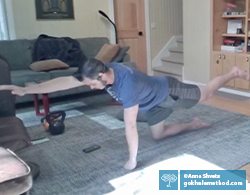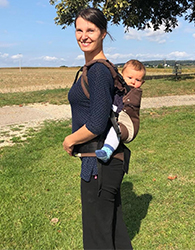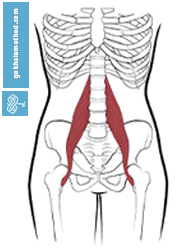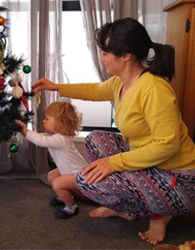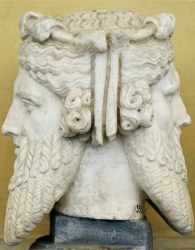Have you been taught cobra pose or locust pose to strengthen your back? It is a common practice to try to strengthen the back with back bends, focusing on the long back extensors on either side of the spine. This approach is used by the McKenzie Method, many yoga teachers, and physical therapists.
In the Gokhale Method® we prefer to strengthen the back by working with the muscles which collectively stabilize the trunk. Our focus is on maintaining a healthy J-spine baseline rather than backbending.
Get Updates on the Latest Blog Posts
You’ve tweaked your back. It may be a stabbing pain that catches with certain movements, it may be that you cannot straighten up, or maybe it’s an electrical, nervy sensation in your buttock.
It is not uncommon for students to show up at our courses aware they have lost several inches of height since their youth. In our culture it is a widely held expectation that you grow up, and then, at some point in later life, start getting shorter again. We all see friends, neighbors, or family members who are on the downward run of this trajectory, and it is virtually common lore that you will “shrink” or stoop in later years.
As we approach International Women’s Day on March 8, I would like to share a few observations regarding gender and health made over the past three decades of teaching posture.
Does gender affect back pain?
Back pain and the posture distortions behind it are very democratic—people of all ages, activity levels, geographic locations, and gender are affected by cultural postural distortions. That said, some modern posture guidelines and expectations are gender-specific, and some of them affect women disproportionately. We will discuss posture guidelines for men another time. In this post, I’d like to address some of the messaging that is relentlessly addressed towards women and girls, and the consequences of this messaging.
Travel is part of our Gokhale Method® DNA—the method arose and developed through study of foreign cultures (including ancestral cultures), and remains informed by images, videos, statistics, and other data from pain-free and remarkably functional human beings.
I have learned firsthand what healthy human posture looks like alongside the Sami reindeer herders in Scandinavia, tribal people in Odisha, India, villagers in Burkina Faso, and people with African roots in Brazil. When I travel-teach, I make it a point to visit the local museums and also check for local cultural events, ethnic restaurants, and areas that might bring to life the kind of insights and body wisdom the Gokhale Method is based on.
When students first meet with a Gokhale Method® teacher they are sometimes surprised to learn that one of the reasons for their back pain is a tight psoas muscle. What does this little-known muscle, embedded deep within our bodies, have to do with back pain? And what do we need to do to have it recede in the background and leave our backs alone?
Since the pandemic we are delighted to have resumed teacher training and welcomed ***** to the Gokhale Method teacher community in Europe and the US. We are also steadily growing our roots in the Southern Hemisphere. Below, Australia-based Teacher Tegan Kahn shares the story of how and why she decided to train.
It’s early January. New Year’s resolutions are swinging into action, and many of them involve improving our health. With the impetus of a fresh start we throw ourselves into ditching poor habits and cultivating better ones. It’s no surprise that January sees the highest gym sign-ups and enrollments for dietary regimens! Other resolutions include getting more sleep, meditating, or learning a new skill—self-care for the mind as well as the body.
I first attended a weekend Gokhale Foundations course in 2016, to address a painfully stiff neck. I loved it. I also found it intense. To incorporate all I was learning about body mechanics, I had to concentrate so hard that I'd emerge from class feeling like my brain had overheated. On top of that, I was rather sore in unexpected places, from using my muscles in new ways.

